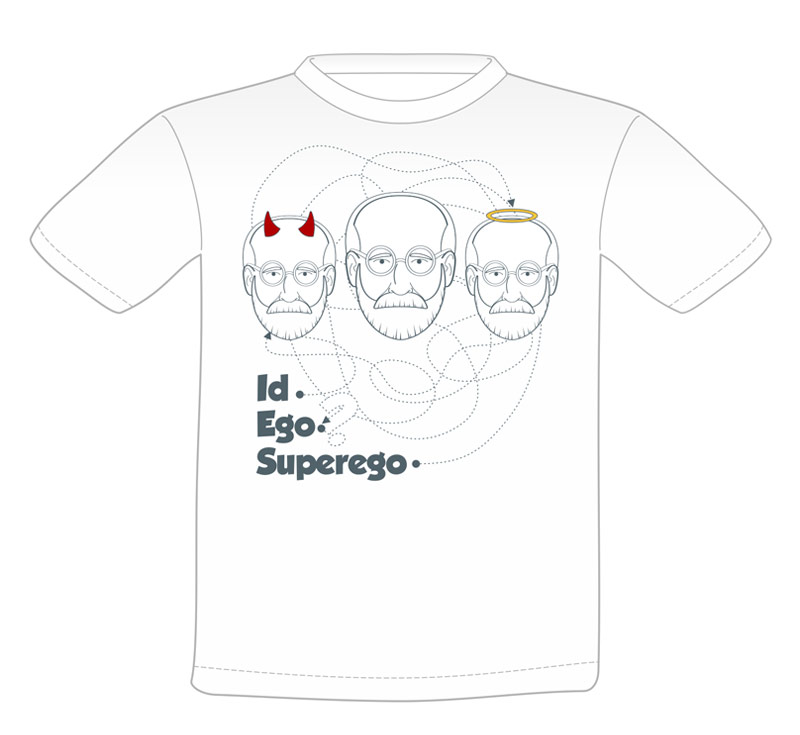
Ryan Gosling plays Holland March, the ego in our story. He embodies all our human base instincts. Jackson Healy, portrayed by Russell Crowe, represents the id in the new Shane Black comedy. In case you’re still a little confused, here are ten films that use characters to represent the the id, the ego, and the superego in their story structure. Rather than just mediating, the superego can actually stop the id from doing certain things it may incline us to do. The superego consists of the conscious and the ideal self. Feud used this example: The id is like a horse and the ego is the rider on top of that horse. The ego is rational and oriented toward problem solving. The ego is the mediator between our sometimes unrealistic id and our over-idealistic superego. Our aggression to fight against death or harm, our libido or instinct towards sex, hunger, and thirst are all aspects of the id. Experts attribute uncoordinated instinctual trends to the id. The conflict created by these three ideas running into each other gives us more than enough drama to keep a story fresh for two hours of screen time, which is why this design is often seen in screenplays.įor anyone who missed the day they discussed Freud’s ideas in school, the id is the primal component of the personality. Long before Freud’s suggestion of this idea, stories were often told with a key character representing one of these three aspects of the psyche. He suggested that our personalities could be seen as having three parts: the id, the ego, and the superego. It also has the function of persuading the ego to turn to moralistic goals rather than simply realistic ones and to strive for perfection”.Sigmund Feud is credited with popularizing the idea that the human psyche is multi-faceted. “The superego’s function is to control the id’s impulses, especially those which society forbids, such as sex and aggression. for the potential whistleblower) may not necessarily be the action we believe is right (blowing the whistle). For example, in business ethics what is pragmatic (and causes least pain – think e.g. There can be a conflict between values and desires (id) or with the reality principle (ego) at any time with the human psyche. The superego is idealistic and led by values (even if the values prove to be imposed by our upbringing, and irrational). So in a sense the superego can be in conflict with either ego or id, but seeks to create some moral order on both (and any conflict between them). neurotic) only be liberated from unconscious (repressed) desires or suppressed feelings by therapy. However, as it is a product of parental and social ideas of right and wrong it can also be the source of irrational guilt, for example, about sexual feelings or behaviours, and correspond to an ‘immature conscience’. As the superego is our moral controlling mechanism (Freudian origin of conscience), it seeks to reconcile contradictory feelings, desires and goals within the psyche. It is pragmatic (in a utilitarian sense, consequentialist).ģ. In this sense ego and id are in conflict, as in the two horses of Plato’s chariot (passions verus ideals) which may pull in opposite directions in behavioural terms. The ego is trying to impose some rational order on the id. The ego comprises an idea of self or a projection of our self identity (who am I?) – where the pleasure principle is moderated by ‘the reality principle’ (in a sense determining ‘what we can live with’), as the attached weblink expresses it “working out realistic ways of satisfying the id’s demands, often compromising or postponing satisfaction to avoid negative consequences of society”. The ego is ‘like a man on horseback, who has to hold in check the superior strength of the horse.’” ( see weblink below)Ģ. “Freud made the analogy of the id being a horse while the ego is the rider. Freud used a related horse analogy (a bit different for the charioteer) There is actually a conflict also within the id between eros (creative life instinct) and thanatos (destructive death instinct) – an intriguing idea when we consider the way society misuses and misunderstands the role of eros in the psyche.

The picture is of the screaming and demanding infant that needs to be taught/develop self-control. It represents the unruly passions – one of the horse’s pulling Plato’s chariot in the analogy of the charioteer. As the id is primitive (infantile), and in a sense compulsive part of the psyche, and driven by the ‘pleasure principle’.


 0 kommentar(er)
0 kommentar(er)
